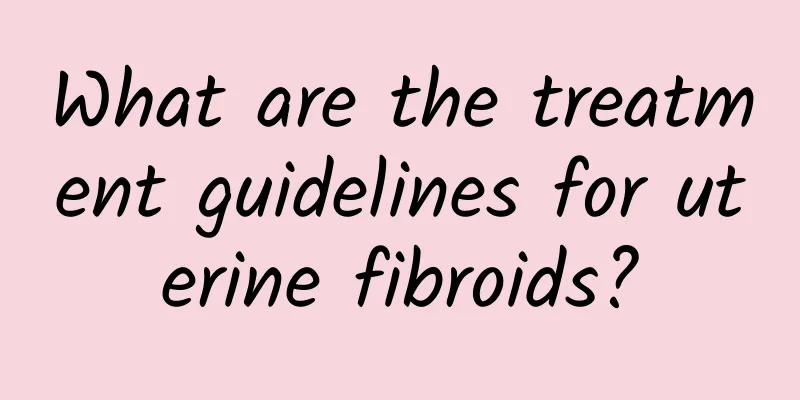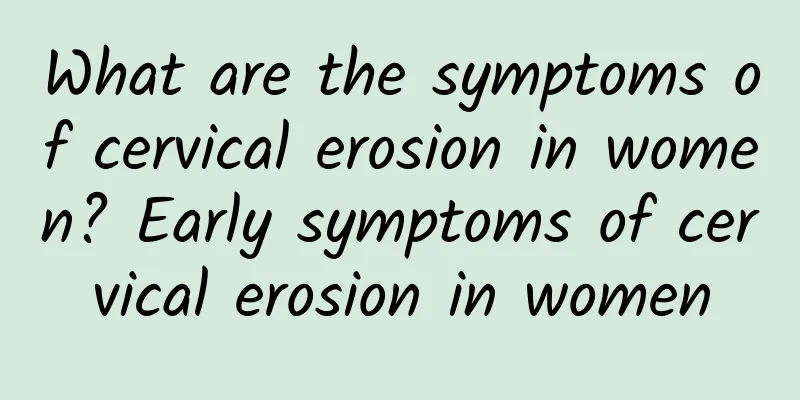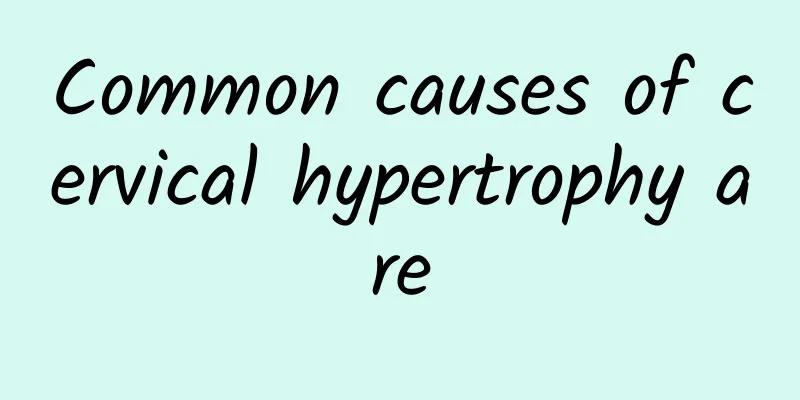What are the treatment guidelines for uterine fibroids?

|
What are the treatment guidelines for uterine fibroids? In recent years, the incidence of uterine fibroids has been increasing year by year, posing a threat to the health of many women. In terms of the treatment of uterine fibroids, the medical community has gradually improved a set of scientific and reasonable treatment guidelines to help patients find the most suitable treatment plan for themselves. The treatment of uterine fibroids is based on factors such as the size, number, symptoms, age and fertility needs of the fibroids. Usually, for patients who do not cause obvious symptoms or fertility needs, doctors will adopt an observation and waiting approach to avoid unnecessary surgical risks. For patients with obvious symptoms or fertility problems, the treatment options will be more diverse. Treatment methods for uterine fibroids can be divided into two categories: conservative treatment and surgical treatment. Conservative treatment mainly includes drug treatment and interventional treatment. Commonly used drugs for drug treatment include oral contraceptives, luteinizing hormone, etc., which can reduce the growth of fibroids by inhibiting the secretion of estrogen. Interventional treatment mainly includes interventional embolization and high-intensity focused ultrasound (HIFU) treatment, which can destroy fibroid cells by cutting off the blood supply of fibroids or using ultrasound. For patients with obvious symptoms or acute complications, surgical treatment may be a better choice. There are two main surgical treatments: myomectomy and radical myomectomy. Myomectomy is a surgery that preserves the uterus but removes the fibroids. It is suitable for patients who still want to keep the uterus or have children. Radical myomectomy is to remove the entire uterus together with the fibroids. It is suitable for patients who no longer plan to have children or have large fibroids. In short, the guidelines for the treatment of uterine fibroids mainly follow the principle of "individualization" to determine the treatment plan based on the patient's specific situation. For patients with no obvious symptoms or fertility needs, conservative treatment may be a safer and more reasonable choice. For patients with obvious symptoms or acute complications, surgical treatment may be a better choice. Popular Science Introduction Uterine fibroids are one of the most common gynecological diseases in women. Fibroids are nodules formed by the non-malignant clonal growth of muscle cells in the myometrium of the uterus. The specific cause is still unclear. Generally speaking, women are more likely to develop fibroids before the age of 45, while women over 40 are more likely to have multiple fibroids of varying sizes. The symptoms of fibroids mainly include abnormal menstruation, pelvic pain, frequent urination, and urgency to urinate. It is very important for patients to understand the treatment guidelines and treatment basis of fibroids. When faced with treatment options, patients should first communicate with their doctors in detail to fully understand their condition, age, fertility needs, and the risks and effects of treatment. In addition, patients can slow the growth of fibroids by living a healthy lifestyle, such as maintaining proper exercise, eating a balanced diet, and avoiding long-term stress. Finally, patients should pay attention to the treatment effects and physical changes during the treatment process, and have regular checkups so that the treatment plan can be adjusted in a timely manner. In short, the uterine fibroids treatment guide is a reference provided by the medical community to better guide patients when facing treatment options. Patients should choose the most appropriate treatment plan based on their own conditions and doctor's advice to recover as soon as possible. At the same time, a scientific and healthy lifestyle is also an important measure to prevent fibroids and should be taken seriously. |
Recommend
Can I still have sex if I have cervical erosion? How should I treat cervical erosion?
Cervical erosion is the most common inflammation ...
What are the treatments for habitual miscarriage? Listen to the doctor
In life, habitual miscarriage may occur due to lu...
Fight the "waist" monster: 3 steps to measure your waist correctly
On the eve of Father's Day, it's urgent t...
What are the specific methods for checking vulvar leukoplakia?
Do you know how to check for vulvar leukoplakia? ...
Chronic adnexitis may cause menstrual irregularities
Chronic adnexitis may cause irregular menstruatio...
How to relieve dysmenorrhea? What are the methods to relieve dysmenorrhea?
Dysmenorrhea refers to the pain that occurs durin...
How should patients with dysmenorrhea be treated and nursed back to health?
Many women suffer from dysmenorrhea, so dysmenorr...
What are the clinical manifestations of pelvic inflammatory disease?
What are the clinical manifestations of pelvic in...
Analysis of symptoms after menopause
There are many types of menopause, which are gene...
What is the difference between pelvic effusion and bacterial vaginosis?
What is the difference between pelvic effusion an...
Precautions for artificial abortion
Before an abortion, you should pay attention to a...
Can I eat roasted meat if I have abnormal leucorrhea?
When leucorrhea is abnormal, special attention sh...
Nursing measures for endometrial tuberculosis
Endometrial tuberculosis is now common in many wo...
With the examination of cervical hypertrophy, the patient's condition can be discovered in time
At present, with the increasing number of patient...
Will a Bartholin's gland cyst heal without treatment?
Bartholin's gland cysts usually do not comple...









